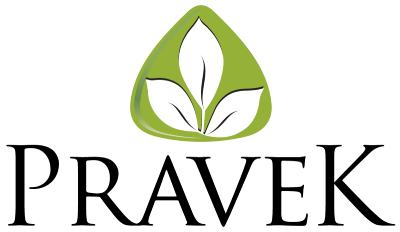-
Abhyanga | अभ्यंग
Abhyanga is a massage that's done with warm oil. The oil is applied on the entire body, from the scalp to the soles of the feet. -
Agni | अग्नि
The third of five elements recognized in Ayurveda: the fire element; the principle of transformation; the digestive fire, which is responsible for digestion, absorption and assimilation; that which transforms food into tissues, energy, and consciousness.
-
Bhramari Pranayama | भ्रामरी प्राणायाम
A very calming yogic breathing practice, also known as “humming bee breath,” that soothes the nervous system and helps connect us with our truest inner nature; this practice consists of inhaling into the belly and exhaling while making a humming sound at the back of the throat—like the gentle humming of a bee. -
Bhuta Agni | भूता अग्नि
Five specific physiological manifestations of agni (one for each element: earth, water, fire, air, and ether) that are housed in the liver; responsible for transforming ingested food into biologically useful substances. -
Chakra | चक्र
Traditionally, ‘chakra’ refers to the core energy centres within our body. There are seven chakras as per Ayurvedic and yogic principles. -
Chyawanprash | च्यवनप्राश
A traditional Ayurvedic herbal jam made primarily of amalaki, but containing a number of other complementary ingredients; Chyawanprash is frequently used as a rejuvenative and is particularly balancing for pitta. -
Dashamula | दशमूल
Literally meaning “ten roots,” this traditional Ayurvedic formula is highly revered for its ability to remove excess vata from the system; it is named for the traditional ingredients in this grounding formula (many of which are roots), and it very effectively directs vata in the body downward. -
Dinacharya | दिनचार्य
A daily routine; an important part of an Ayurvedic lifestyle that helps align our bodies with the daily rhythms of nature; the traditional dinacharya includes a wide variety of daily self-care practices including a rich personal hygiene routine, exercise, spiritual practice, meals, and sleep. -
Ghee | घी
Clarified butter (made by gently heating unsalted butter until the milk solids can be removed); a highly revered substance in Ayurveda that is used in cooking and for therapeutic purposes; also considered an important anupan, capable of carrying herbs deeper into specific tissues. -
Guggul | गुग्गुल
Guggul is praised for its anti-inflammatory properties. Preliminary research suggests it may help treat certain anti-inflammatory conditions, such as acne, eczema, psoriasis, and arthritis. It has also been used to promote weight loss, treat hypothyroidism, and manage cholesterol and blood sugar levels. -
Guna | गुना
In Ayurveda, specific qualities and variations that make us unique individuals, are commonly referred to as one of 20 primary gunas. -
Haritaki | हरीतकी
Haritaki portrays strong anti-bacterial, anti-viral and antifungal properties that are not only used for removing bacteria and germs from the body but also treats wounds and improves healing. -
Hingvastak | हिंगवस्ताक
Hingvastak contains herbs that are heating, grounding, and oily. They effectively counter the opposing vata qualities, creating balance. It is a formulation of 8 herbs, namely: Hing, Sounth, Pippali, Kalimirch, Ajmoda, Sendha Namak, Sweet Jeera & Kala Jeera. -
Ida Nadi | इड़ा नदी
One of the three most important nadis in the body; Ida Nadi is responsible for carrying the flow of breath and awakening higher states of consciousness. Ida nadi is the lunar, feminine channel associated with the left side of our body. It is situated to the left of our spinal cord, travels from the base of the spine to the crown of the head, and is associated with the left nostril. -
Isabgol / इसबगोल
Isabgol helps to manage constipation as it is rich in fiber and adds bulk to stool due to its Guru (heavy) nature. It also stimulates intestinal contractions and peristaltic movements because of its mild Rechana (laxative) nature which helps in easy expulsion of stools. -
Jathara Agni | जथारा अग्नि
One specific physiological manifestation of agni that is responsible for overseeing the digestion and absorption of food; the central digestive fire that nourishes all forms of agni throughout the body. -
Jathara Agni | जथारा अग्नि
One specific physiological manifestation of agni that is responsible for overseeing the digestion and absorption of food; the central digestive fire that nourishes all forms of agni throughout the body. -
Kama | कामा
It refers to the healthy and spiritual use of senses. In ayurveda it is believed that the remedy of the disease is to be found in the the cause itself so the senses have a vital role to play in curing the ailment. -
Kasni | कासनी
Kasni is a good source of various nutrients such as zinc, magnesium, manganese, calcium, iron, folic acid and potassium. Vitamin A, vitamin B6, vitamin C, vitamin E and vitamin K are also present in Kasni. -
Katuka | कटुका
Katuka is not only used for removing bacteria and germs from the body but also used for recurring fever conditions. It also helps in reducing general debility, weakness, and fatigue and improves the vitality of the body. It is a strong anti-viral, anti-bacterial, and antifungal properties. -
Langhana | लंघाना
A deconstructive type of substance, process, or treatment therapy (also known as apatarpana) that is reducing and lightening—catabolic in nature; the process of fasting; the opposite of brahmana; langhana is one type of shodhana chikitsa—a cleansing therapy. -
Lavan Bhaskar | लवण भास्कर
Lavan Bhaskar Churna is a traditionally prepared medicine that cures chronic indigestion, constipation, flatulence and gastritis. It is a mix of various salts that cures acidity, soothes irritation in the stomach lining. -
Lekhana | लेखाना
Scraping action; a food, herb, or treatment therapy that “scrapes” or removes accumulated fat and toxins from the body; lekhana is one type of shodhana chikitsa—a cleansing therapy. -
Majja | मज्जा
Majja means marrow, as in bone-marrow (asthi-majja). Being one of the seven dhatus, it is soft and has the main function of filling up the asthi and nourishing the shukra. -
Marmas | मर्मस
Marmas are the 365 vital energy points in the body of which 108 are of great importance in ayurveda. They are also called door receptors. -
Mula | मुला
The root, or point of origination, for any given Ayurvedic srotas (channel system); the mula often reveals more subtle and developmental connections that can impact the overall health of the srotas. -
Nasya | नस्या
Nasya involves herbal oils being administered through your nasal passages. It addresses body imbalances above the shoulders. It relieves conditions such as sinus congestion, sinusitis, headaches, hormone imbalance, and poor memory and concentration. -
Neem | नीम
Neem leaf and its constituents have been demonstrated to exhibit immunomodulatory, anti-inflammatory, anti-hyperglycemic, antiulcer, antimalarial, antifungal, antibacterial, antiviral, antioxidant, antimutagenic and anticarcinogenic properties. -
Neti | नेति
A therapeutic practice of cleansing the nasal passages with saline water (also known as jala-neti) -
Ojas | ओजस
Ojas is the positive subtle essence of kapha, which gives the body strength, vigour, vitality, and immunity; the end product of perfect digestion. Ojas shares a subtle functional integrity with tejas and prana. -
Panchakarma | पंचकर्मा
According to ayurveda this refers to the five cleansing therapies i.e. vaman, virechan, basti, nasya and rakta moksha. In literal terms these internal purification refer to vomiting, purgation, decoction enema, oily enema, and nasal medications. -
Pitta | पित्त
One of the three doshas (functional energies in nature); pitta is predominated by the fire and water elements, and it governs transformation; it is light, sharp (or penetrating), hot, oily, liquid, and spreading. -
Pranayama | प्रणायाम
It is a breathing exercise for purifying the blood and vitalizing our inner organs. The three aspects of this exercise are - inhalation, retention and exhalation with the aim of increasing the span of each aspect. -
Rasayana | रसायन
Rasayana is defined as a therapeutic measure which promotes longevity, prevents aging, provides positive health and mental faculties, increases memory, and impart resistance and immunity against diseases. -
Rechaka | रेचका
Rechaka, or rechaka pranayama, is a Sanskrit word that means "exhalation." It refers to a form of yogic breathing in which the exhalation is lengthened, while the inhalation remains free. -
Ritucharya | ऋतुाचार्य
It is the ancient Ayurvedic practice and is comprised of two words, “Ritu” which means season and “charya” which means Regimen or discipline. Ritucharya consists of lifestyle and ayurvedic diet routine to cope with the bodily and mental impacts caused by seasonal changes as recommended by Ayurveda. -
Shleshaka | श्लेषका
Located in the body joints of the body, it is the fifth subtype of kapha, is viscous and oily and has the function to protect the bony joints by keeping them firm and united. It also helps in keeping the bones' function smooth. -
Shodhana chikitsa | शोधन चिकित्सा
Shodhana chikitsa is a form of Ayurvedic cleansing therapy aimed at removing excess doses, ammo, and other toxins from the body. The five cleansing therapies for which Panchakarma is named are examples of shodhana chikitsa, but there are others, such as fasting (langhana) and scraping fat (lekhana). -
Tridosha | त्रिदोष
It refers to the combination of three humors, morbid substances i.e. the vata, pitta and kapha. The human body is a combination of these three essential factors and these three doshas are responsible for maintaining the integrity of human body and for governing the physical structure and functions of the living beings. -
Trikatu | त्रिकटु
A traditional Ayurvedic formula composed of three pungent herbs—pippali, ginger, and black pepper; an effective rejuvenative for kapha; traditionally used to kindle agni (the digestive fire), burn excess fat and ama (toxins), while supporting healthy metabolism, clear respiratory channels, and the lungs. -
Triphala
Triphala has been used in traditional Ayurvedic medicine since ancient times as a multi-purpose treatment for symptoms ranging from stomach ailments to dental cavities. It is also believed to promote longevity and overall health. -
Udaka-vaha srotas | उदक-वाह स्त्रोत
Srotas are millions of channels or pathways forming the sophisticated transport system within the body. They vary in size and shape and connect different areas, organs and tissues of the body. They carry the tissues, raw materials needed for tissue building, food, air, water and many essential things in the body needed for life activities. Some Srotas also excrete the metabolic wastes and toxins, keeping the body healthy. -
Ujjayi pranayama | उज्जायी प्राणायाम
A yogic breathing practice also known as “breath of victory,” which consists of inhaling and exhaling through a slight constriction at the back of the throat so that the breath becomes mildly audible; this practice is slightly heating, deeply tranquilizing, pacifying to all three doshas, and is generally appropriate for anyone, and commonly encouraged throughout the practice of yoga asana. -
Vaidya | वैद्य
Vaidya or vaid is a Sanskrit word meaning "traditional practitioner of Ayurveda", an indigenous Indian system of alternative medicine. Senior practitioners or teachers were called Vaidyarāja (physician-king) as a mark of respect. -
Vipaka | विपका
The post-digestive effect of an ingested substance, experienced in the final stages of digestion—after the rasa (taste), and virya (heating or cooling energy of a substance) have been experienced; this stage of digestion affects the excreta and nourishes individual cells. -
Yoga | योग
A Sanskrit word that literally means “to yoke” or “to bind” together—“to unite;” the practice of yoga is a collection of physical, mental, and spiritual disciplines intended to transform and liberate the mind-body organism. In the West, the word yoga usually refers to the third limb of yoga, as described in Patanjali’s Yoga Sutras: the practice of asanas (physical postures). -
Yogi | योगी
A yogi is a practitioner of Yoga, including a sannyasin or practitioner of meditation in Indian religions. The feminine form, sometimes used in English, is yogini.
A
B
C
D
G
H
I
J
K
L
M
N
O
P
R
S
T
U
V
Y
- Choosing a selection results in a full page refresh.
- Opens in a new window.

